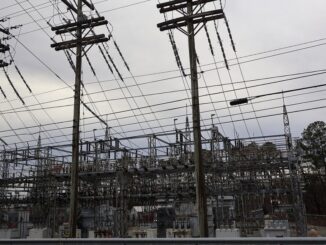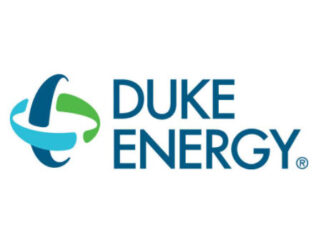
From corporate giants like Google to individual families, plenty of Duke Energy customers in North Carolina want to do their part in the transition to clean energy.
But if the Charlotte-based utility’s proposed green tariffs are approved as is, that good will would only help finance Duke’s compliance with the state’s carbon law — not ensure more renewables are added to the grid sooner.
The two programs, one for large customers and another for residential ratepayers, have been before the state Utilities Commission for nearly a year, and regulators there have given little indication of how they will rule.
But with Duke’s existing green tariff for institutions like cities and corporations running out of room, the company is eager for a decision soon, and many stakeholders fear the worst.
In the long absence of federal climate and clean energy policy, scores of large electricity users have set their own goals for curbing carbon pollution and ensuring their energy comes from renewable sources.
Those large customers include universities, Fortune 500 companies, and even the U.S. Department of Defense. But in North Carolina, where Duke is a regulated monopoly, those entities can’t buy electricity directly from a third-party like a solar developer.
A “green tariff,” in which Duke acts as a go-between, helps solve that problem. Large customers can negotiate the construction of a new renewable project like a large solar field, which sells electrons to Duke. The utility then charges the customer for the same amount of electrons, plus a premium and an administrative fee.
Duke’s original Green Source Advantage program was one such tariff. Though the scheme had its critics, it met an essential criterion for customers with climate goals: the renewables would not have been built but for the program.
“These are 100% incremental megawatts, over and above what would have been done otherwise,” Carson Harkrader, CEO of Durham-based Carolina Solar Energy said back in 2020, of a 35 megawatt solar project built for the city of Charlotte using Green Source Advantage.
Duke University — which shares a benefactor but no other relation to the utility — has also turned to Green Source Advantage to meet its carbon goals, contracting with Asheville-based Pinegate Renewables to build three new solar fields of 101 megawatts.
But Casey Collins, the school’s director of utility and energy services, says the campus won’t participate in the next iteration of the green tariff if it’s approved as proposed. “I’m not a fan,” he said.
The most important and “fundamental flaw” of Duke’s proposed Green Source Advantage Choice program, Collins said, is that it doesn’t provide additionality. “Regulatory surplus is the exact term,” he added.
Regulatory surplus is easy to achieve if regulation is lax or non-existent. In 2020, state law required Duke to produce just 12.5% of its electricity from renewables; whatever got built under the Green Source Advantage program was gravy.
But a 2021 law requiring Duke to zero out its carbon emissions by 2050 blurs the line between gravy and business as usual. If a solar field would have been built in 2040, can it really count as additional if it’s built in 2025?
Advocates say the answer is “yes,” for a host of reasons. For one thing, new renewable sources of energy are more valuable now for displacing fossil fuels than they will be in the future.
“From a carbon perspective, these are really long-lived molecules,” said Jake Duncan, southeast regulatory director with Vote Solar. “Every molecule of carbon we put out now is going to live in the atmosphere for decades to come — contributing to the greenhouse gas effect.”
What’s more, the 2021 law requires Duke to balance reliability and affordability in considering its compliance with the 2050 target — not produce a specific amount of renewable energy on a set timeline. That means there’s no guarantee that the solar field would be built in 2040 at all.
In its separate Carbon Plan proceeding, Duke proposes an annual cap on new solar added to the grid of 1,350 megawatts. Upwards of 400 megawatts could be built through the Green Source Advantage Choice program.
The interconnection cap could be avoided with smaller, distributed solar resources that don’t require more transmission upgrades or projects that utilize capacity from retiring coal plants, advocates said.
“We think there are a bunch of ways to get around that alleged problem,” said Nick Jimenez, senior attorney with the Southern Environmental Law Center.
Spurring clean energy projects that Duke wouldn’t otherwise build under its mandate could have other advantages. For instance, the company might be less likely to build some new gas infrastructure — assets that could become stranded and cost ratepayers.
Initiatives that almost certainly wouldn’t meet the affordability metric, such as rooftop solar for low-income households, would also help reduce energy burdens for those most in need, Jimenez said.
And companies like Google — with 24-hour data centers in the state — are determined to ensure carbon-free sources meet their needs around the clock, and their presence boosts economic development.
“We should try to be on the cutting edge, serving the interests of these sophisticated corporates who want to be here,” said Jimenez. “So, we should design programs that can get them 24-7 [carbon-free energy.]”
Instead, there’s wide agreement that Duke’s proposal would, essentially, get certain customers to chip in for its compliance with the 2021 carbon law.
“If it goes through as currently proposed,” said Ethan Blumenthal, regulatory counsel at the North Carolina Sustainable Energy Association, “those who participate in the program would help subsidize the transition to renewables, but not expedite the transition.”
And especially for the program aimed at residential customers, called Clean Energy Impact, that nuance could be lost on participants — potentially violating FTC rules, according to the office of the North Carolina Attorney General.
“The programs have the potential to mislead customers while not meaningfully supporting the adoption of clean energy,” the office wrote.
Numerous large customers including Blumenthal’s group, which represents large buyers as well as renewable developers, as well as Google and the Department of Defense have also flagged the “additionality” problem to regulators.
Center for Resource Solutions, the nonprofit that certifies voluntary renewable energy purchase programs, also raised a flag. “Under current rules,” the organization said in a June letter, “the Green-e® Energy program would not be able to certify Duke’s Customer Programs.”
The CRS letter also noted: “Customers of products that are not surplus to regulation can credibly claim to be using renewable energy… and that they are supporting compliance.”
For many customers, that might be enough. Not every corporation’s standards match those of Google and major universities. And Duke Energy points to more than a dozen local chambers of commerce and other customers who support their proposal as is.
Still, the company doesn’t dispute the lack of regulatory surplus in its programs, and emphasizes that it will make that clear when advertising them.
Plus, said Wendi Fleener, Duke’s director of clean energy, “we do not believe additionality is required or feasible under [state law].” She added: “As more and more states and utilities move towards net zero, I don’t think additionality is really where folks should be focused.”
With just 39.1 megawatts left in its existing green tariff program, Duke is eager for a decision from regulators.
“I’m just very focused on trying to get some options for our customers as soon as we can,” Fleener said.
But advocates like Jimenez are anxious. If the commission adopts Duke’s programs as proposed, they would miss an opportunity to spur more clean energy at a critical time.
“It would be bad,” he said. “And the next bite at the apple would probably be some years down the road.”



